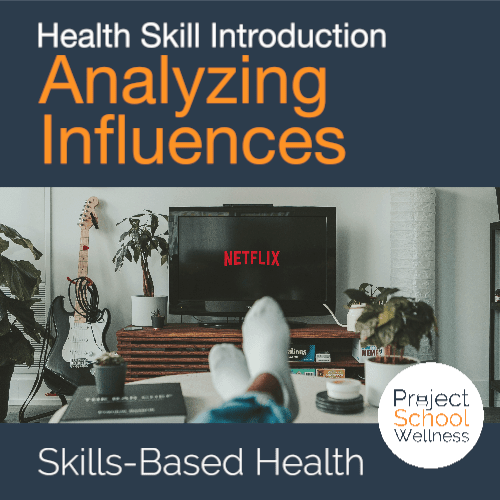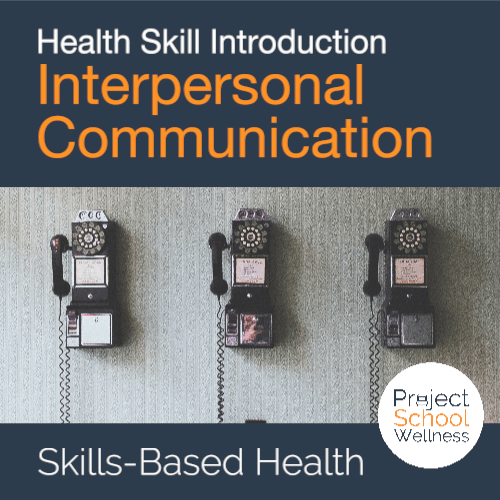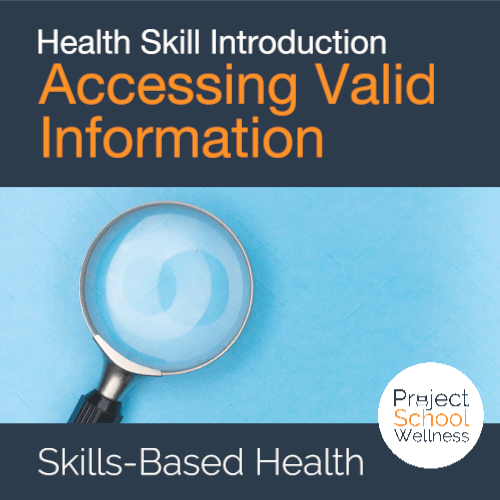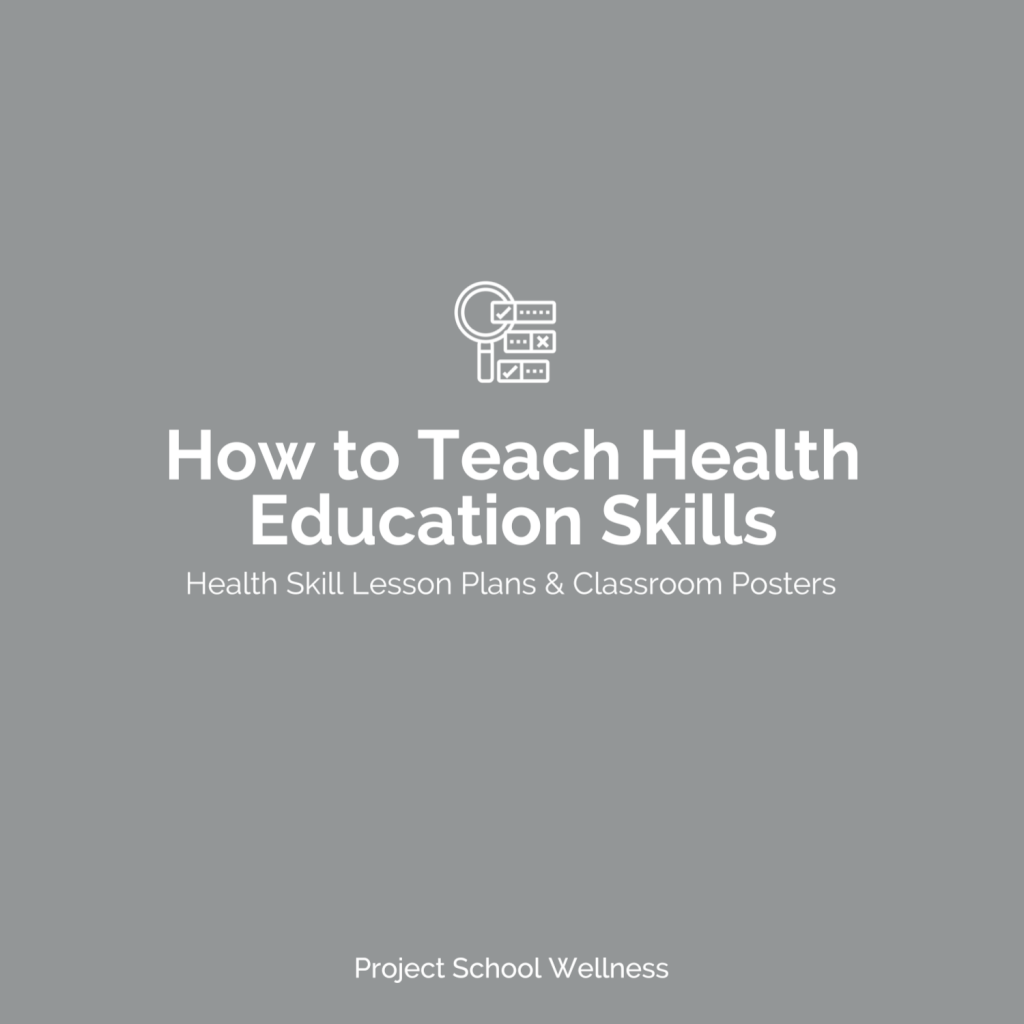How to Teach Health
Education Skills
Health Education Skill Lesson Plans & Classroom Posters
Teaching health education skills is the foundation and core of skills-based health education. And the key to actually teaching students how to lives healthy lives.
While there are many skills we need to master in life to live healthy, thriving lives, the National Health Education Standards highlight seven critical skills students should be exposed to, practice, and master throughout their health education. These are the seven skills:
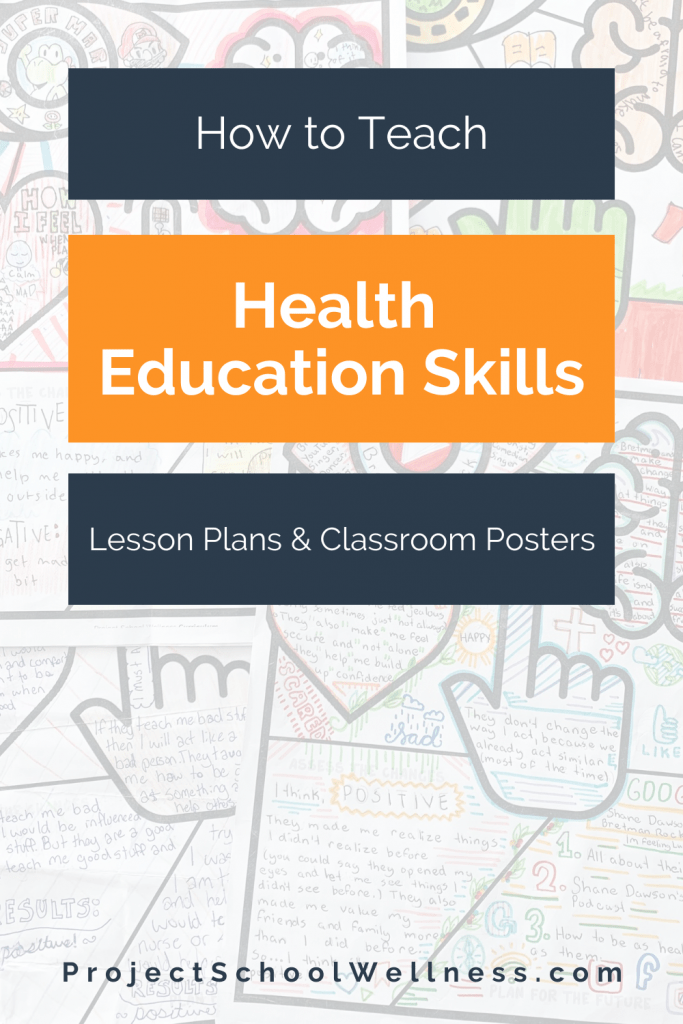
How Does Skills-Based Health Education Work?
The general idea of skills-based health education works like this:

This is a pretty simplified explanation of how skills-based health education works. For a more detailed guide, sign up for our free skills-based health education workshop.
So How Do You Teach Students the Health Skills?
In skills-based health education, the health topics taught will vary based on your students' specific health needs. However, the skills generally stay the same. This means that once students learn how to do the skills, they can easily apply the skills to whatever health situation they find themselves in (in real life or in the classroom).
When teaching the skills to my students there are three key pieces of information I share:
-
- Definition of the skill
- Explanation of why the skill matters
- A step-by-step guide for performing the skill
For example, if Decision Making is the skill being taught, I may use a teaching script like this:
- What is the Skill - The ability to make values-based decisions that enrich your life and boost well-being.
- Why it Matters - All day, everyday, we make conscious and unconscious decisions. Along with each and every choice comes a consequence that we have to live and deal with. By learning how to make healthy decisions, we limit the risk of negative and adverse outcomes and can take ownership of our well-being.
- How to Do It - The D.E.C.I.D.E. Model is a decision-making process that empowers individuals to make thoughtful decisions based on their values and in full awareness of the potential consequences.
Then, after students are familiar with the skill and understand the basic process for performing the skill, they practice using the skill in a real-life scenario. Once they understand the general idea of how the skill works, they can follow the steps to perform the skill in connection with any health topic or health issues you’re teaching or they're dealing with.
Free Skills-Based Health Workshop
Tips for Teaching Skills
- Connect it to real life as much as you can
- Use pop culture/media examples
- Let students explore independently and find examples of the skill in their real life and the content the consume (movies, TV, social media, books, etc.)
- Give students an opportunity to explain why the skill is important and how it specifically relates to the life of a middle or high schooler
- After sharing the initial step-by-step guide, let students make it their own (while keeping the essence of the skill progression). Let them come up with their own language, acronyms, cues, etc.
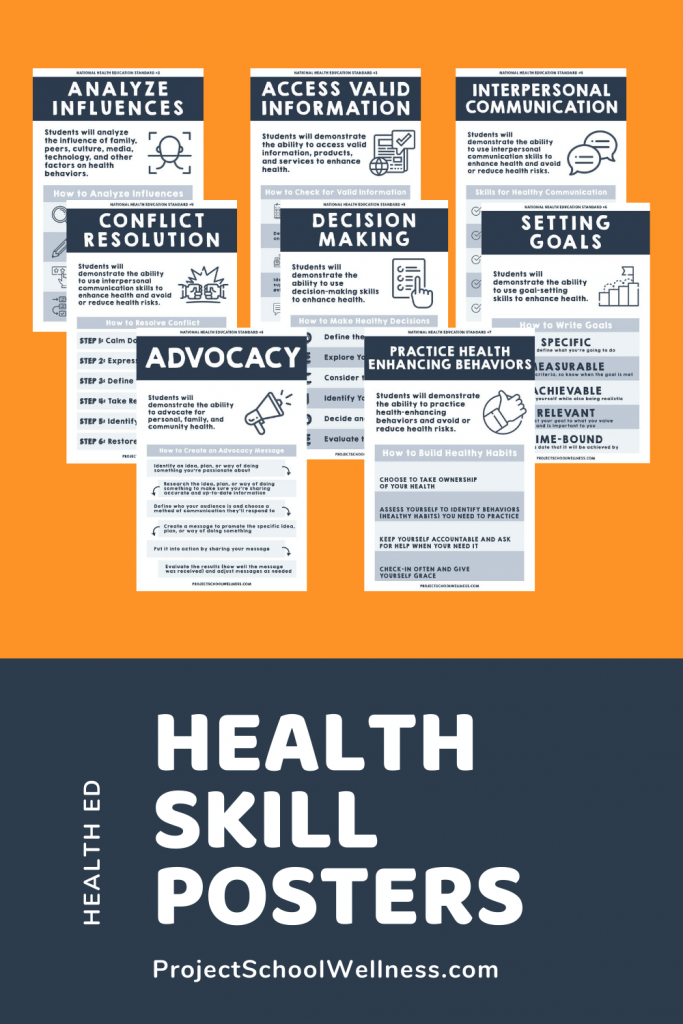
Lesson Plans and Classroom Posters for Teaching Health Skills
To help make the process of teaching students the seven health skills, I’ve created lesson plans and classroom posters related to each skill. The idea for these lesson plans is for teachers to use them to introduce the skill and to present a step-by-step guide for performing the skill. Then, teachers can use the step-by-step guide to guide students through skill practice in relation to any health topic.
If you’re not sold on skills-based health, let me give you one more pitch. The beauty of skills-based health education is that it’s relevant to our students’ daily lives and it’s highly adaptable, and able to flex to fit the exact needs of our students. And once students understand the core skills, they are set for a life of health and happiness.
It’s our job as teachers to present the skill progression, facilitate guiding learning opportunities, and help them build confidence so they can use the skills in their everyday lives.
Resources for Teaching Skills-Based Health Education
Before signing off, here are a few skills-based health education resources I highly recommend:
- Our free Skills-Based Health Education workshop (comes with a lesson planning template + free Advocacy lesson plans)
- RMC.org - This is THE place to find detailed rubrics and resources for teaching health education skills. And it’s all FREE!
Free Skills-Based Health Education Workshop
Get instant access to our free "How to Teach Skills-Based Health" workshop. Earn free CE hours and download free advocacy lesson plans!
Hello. I'm Janelle!
A middle school health teacher turned curriculum developer (and #WAHM). I'm on a mission to share the easiest-to-teach, most impactful health lesson plans on the Internet. Because your time and energy is better spent on teaching and connecting, not on planning and prep.
